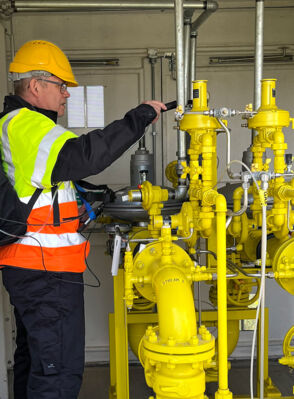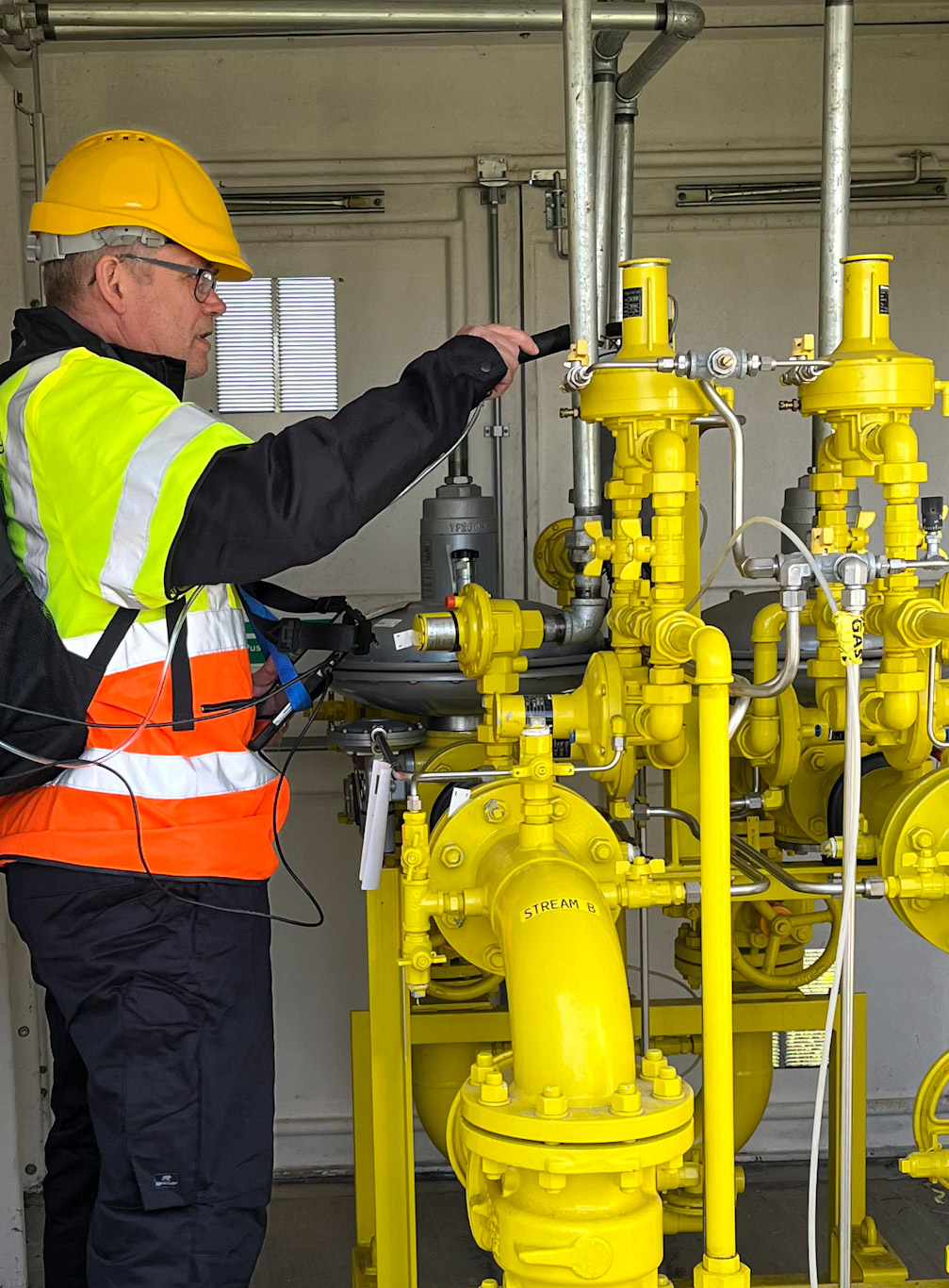Working towards a fossil-free future safely with hydrogen detection technology
Hydrogen has significant potential to help decarbonize our economy and to become the fuel of the future. INFICON has world-leading expertise to help make this vision a reality.
As we move towards a fossil-free future, hydrogen is frequently discussed as tomorrow’s fuel. When used, the only by-product from its combustion is water.
However, while hydrogen can be used as a fuel, it is not an energy source. Hydrogen has to be produced using other energy sources, so it is an energy carrier, much like electricity. But unlike electricity, it does not need be used in the moment – it can be stored for later use.
This decouples energy use from power generation. In a fossil-fuel powered vehicle, for instance, the motion comes from a primary fuel that has been stored and used in the same vehicle. Hydrogen, by contrast, is produced in a large-scale plant elsewhere, using sustainable energy; or with traditional sources, while ensuring that emissions and waste are handled in a responsible, sustainable way.


However, several obstacles lie in the way before a hydrogen society can become a reality and technology needs to advance on several fronts. First and foremost, the conversion of other energy sources into hydrogen is frequently costly and inefficient. Ways to produce and distribute hydrogen efficiently, sustainably and in large scale need to be developed.
Challenges for hydrogen use
Hydrogen is already produced industrially, for instance for use in the fertilizer industry, so technology does exist. But the most common method today is by refining natural gas, which is a fossil fuel, so this production method does not help the decarbonization process. It has to be combined with carbon capture and storage (CCS) if the carbon footprint is to be reduced.
Hydrogen can also be produced by electrolysis, but this process is energy-intensive.
The safe use and transport of hydrogen is a field of intense research at the moment. Hydrogen is flammable in a wide range of concentrations, from low to high, to a greater degree than most other fuels. It only requires a small spark to ignite a hydrogen mix. However, there is, essentially, nothing new about this. Gas mixes with hydrogen have been used for almost a hundred years as the main component in coal gas, which is better known as town gas.
Non-flammable mixtures of hydrogen and nitrogen were introduced by INFICON when it pioneered diluted hydrogen for leak detection back in the early 1980s.By detecting hydrogen in very low concentrations, INFICON’s instruments can help find leaks in both accessible and buried systems with a very high degree of accuracy. This technology is today used routinely for quality control of many products, including refrigerators and air conditioning units.
INFICON is taking an active part in the development of the hydrogen society and is helping make it a reality. The company participates in the work of several organizations that represent the interests of stakeholders in the industry and help these promote hydrogen as an enabler of a zero-emission society.
New hydrogen detection methods
While INFICON is a world leader in hydrogen detection, specializing in finding hydrogen gas in low concentrations, the future hydrogen society will also require detection of high levels. INFICON is currently working to develop technology to measure hydrogen in concentrations from less than 1 ppm to 100%. With this technology, INFICON can develop instruments for survey and emergency fault finding for hydrogen distribution in natural gas pipelines, where a leak can cause a cloud of gas with a concentration that is far too high for a sensitive instrument to measure.
In addition, it will be necessary to measure the quality of the hydrogen produced. For example, gas for use in fuel cells requires a certain purity. Such analysis is typically performed by gas chromatography, a technology already implemented in several INFICON products. New instruments are currently being developed by INFICON for these use cases.
Shades of hydrogen
In the longer term, producing hydrogen from fossil fuel is not seen as sustainable. This type of hydrogen is known as grey hydrogen. When CCS is used to eliminate the carbon footprint, the resulting product is called blue hydrogen.
Hydrogen produced with nuclear power is frequently seen as an intermediate step – this is known as pink hydrogen. But the ultimate goal is green hydrogen, where hydrogen is produced with renewable sources, such as wind, solar and hydroelectric power. Excess energy that cannot be received by the grid can then be used to produce hydrogen.
The development towards a hydrogen society is coming a little bit closer each year. Hydrogen is for instance produced from natural gas at the Humberside Hub in the UK, close to salt mines where CO2 can be deposited. The gas grid in the UK is being upgraded to receive a gas mix with 20% hydrogen. In the Netherlands, the state-owned gas utility company has announced plans to build a national network that will link up hydrogen supply with demand. The United States has also announced plans to develop regional hydrogen hubs.
One of the most promising applications for hydrogen is for use as an energy storage medium to help smooth out the peaks and troughs of renewable power production. When the sun shines and the wind blows, surplus electricity can be used to produce hydrogen for later use. When renewable energy is scarce, the hydrogen gas can be used as fuel in power stations, or in fuel cells that produce electricity.
For instance, on the North Sea coast of Germany, in the state of Schleswig-Holstein, plans are underway to harness wind energy to produce green hydrogen. In southern France, in the Provence-Alpes-Côte d'Azur region, solar farms with a total capacity of more than 100 MW will power a 40 MW electrolyzer capable of producing 5 tons of green hydrogen per day to meet the needs of a biofuel production process.
Over the coming years, a number of challenges need to be tackled to make an energy system based on hydrogen a viable proposition. In all stages of handling the hydrogen, leak detection will be needed to help ensure this is managed safely. INFICON is ready to do its part to help make the hydrogen society become a reality.
Curious about how INFICON leak detectors can help ensure hydrogen is managed safely?